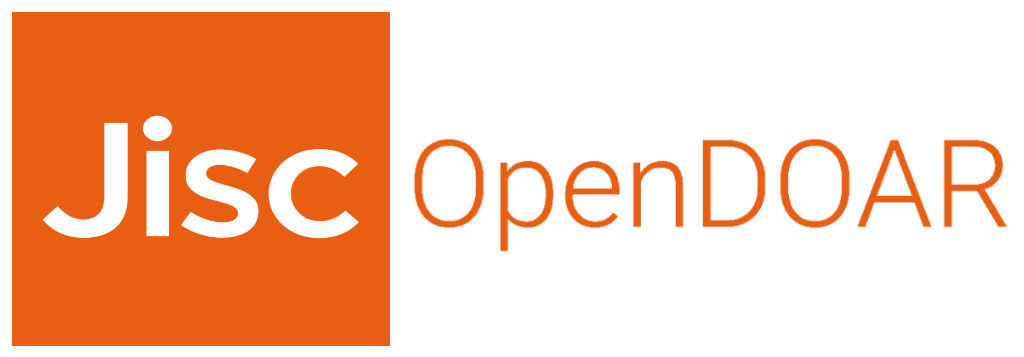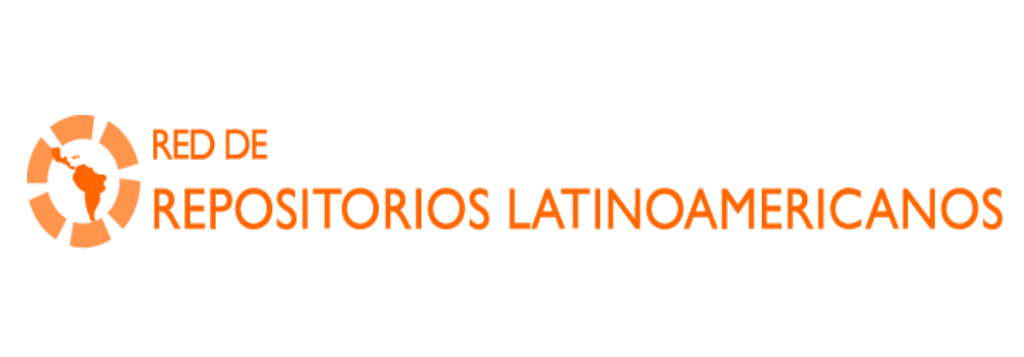Mostrar el registro sencillo del ítem
Determinación de la diversidad taxonómica y funcional de hongos a través de metagenómica en isla de recursos y su influencia en la degradación de materia orgánica en ambiente semiárido de la Guajira.
| dc.contributor.advisor | Posada Buitrago, Martha Lucía | |
| dc.contributor.advisor | Cuervo Soto, Laura Inés | |
| dc.contributor.author | Jaime Castellanos, Leandra Camila | |
| dc.date.accessioned | 2022-10-18T15:40:38Z | |
| dc.date.available | 2022-10-18T15:40:38Z | |
| dc.date.issued | 2022-05 | |
| dc.identifier.uri | https://repositorio.universidadmayor.edu.co/handle/unicolmayor/5713 | |
| dc.description.abstract | Las islas de recursos son arreglos ecológicos representativos de zonas áridas y semiáridas, donde se acumulan nutrientes y materia orgánica en el suelo, creando un microhábitat favorable bajo el dosel de un árbol nodriza. La transformación del carbono en la naturaleza ocurre principalmente por los microorganismos, y esta transformación es mucho mayor bajo el dosel de árboles y arbustos comparada con suelos desnudos de vegetación que se encuentran contiguos a islas de recursos. Dentro de los microorganismos, los hongos ejercen un papel fundamental en el ciclaje del carbono, debido a que producen un conjunto de enzimas que degradan eficientemente la materia orgánica, sin embargo, poco se conoce sobre los grupos taxonómicos que participan en esta dinámica en islas de recursos en los ambientes áridos de la Guajira. Con esto en mente, se planteó conocer la taxonomía de hongos presentes en estos ecosistemas a través de la metagenómica y determinar la abundancia de los genes que están fuertemente relacionados con la degradación de materia orgánica. Para esto se tomaron muestras de suelo de tres árboles nodriza bajo el dosel (V), y suelo desnudo como control (C), en temporada húmeda (W) y seca (D) en la Guajira. Se extrajo el DNA total de cada muestra y se obtuvo el metagenoma por secuenciación. Los datos mostraron la presencia de 8 filos, 25 clases, 62 órdenes, 7 111 familias y 47 géneros de hongos. Se detectaron 9 vías de metabolismo de materia orgánica, las principales relacionadas al metabolismo de carbohidratos, biosíntesis y metabolismo de los glicanos, como también de lípidos, aminoácidos y metabolitos secundarios. El análisis de los genes en ambas temporadas mostró que hubo mayor abundancia de genes en presencia de vegetación, frente al control. La abundancia estuvo relacionada a genes con actividad Glicosil-hidrolasas en más del 60%, los cuales incluyen algunas actividades como: beta-glucosidasas, endoglucanasas, xilosidasas, celulasas, entre otras. | spa |
| dc.description.abstract | Resource islands are representative ecological arrangements of arid and semi-arid zones, where nutrients and organic matter accumulate in the soil, creating a favorable microhabitat under the canopy of a nurse tree. Carbon transformation in nature occurs primarily by microorganisms, and this transformation is much greater under the canopy of trees and shrubs compared to bare soils of vegetation that are found adjacent to resource islands. Among microorganisms, fungi play a fundamental role in carbon cycling, because they produce a set of enzymes that efficiently degrade organic matter, however, little is known about the taxonomic groups that participate in this dynamic in islands of resources in the arid environments of La Guajira. With this in mind, it was proposed to know the taxonomy of fungi present in these ecosystems through metagenomics and to determine the abundance of genes that are strongly related to the degradation of organic matter. For this, soil samples were taken from three nurse trees under the canopy (V), and bare soil as a control (C), in the wet (W) and dry (D) seasons in La Guajira. Total DNA was extracted from each sample and the metagenome was obtained by sequencing. The data showed the presence of 8 phyla, 25 classes, 62 8 orders, 111 families and 47 genera of fungi. Nine organic matter metabolism pathways were detected, the main ones related to carbohydrate metabolism, biosynthesis and metabolism of glycans, as well as lipids, amino acids and secondary metabolites. The analysis of the genes in both seasons showed that there was a greater abundance of genes in the presence of vegetation, compared to the control. The abundance was related to genes with Glycosyl-hydrolase activity in more than 60%, which include some activities such as: beta-glucosidases, endoglucanases, xylosidases, cellulases, among others. | eng |
| dc.description.tableofcontents | RESUMEN 7 INTRODUCCIÓN 9 1. OBJETIVOS 11 1.1 OBJETIVO GENERAL 11 1.2 OBJETIVOS ESPECÍFICOS 11 2.1 BASES TEÓRICAS 12 3. ANTECEDENTES 18 4. METODOLOGÍA 20 4.1 TIPO DE INVESTIGACIÓN 20 4.2 TIPO DE ESTUDIO 20 4.3 POBLACIÓN Y MUESTRA 20 4. RESULTADOS 24 6. DISCUSIÓN. 37 7. CONCLUSIONES 42 8. BIBLIOGRAFÍA 43 | spa |
| dc.format.extent | 47p. | spa |
| dc.format.mimetype | application/pdf | spa |
| dc.language.iso | spa | spa |
| dc.rights | Derechos Reservados - Universidad Colegio Mayor de Cundinamarca, 2022 | eng |
| dc.rights.uri | https://creativecommons.org/licenses/by-nc-sa/4.0/ | spa |
| dc.title | Determinación de la diversidad taxonómica y funcional de hongos a través de metagenómica en isla de recursos y su influencia en la degradación de materia orgánica en ambiente semiárido de la Guajira. | spa |
| dc.type | Trabajo de grado - Pregrado | spa |
| dc.description.degreelevel | Pregrado | spa |
| dc.description.degreename | Bacteriólogo(a) y Laboratorista Clínico | spa |
| dc.publisher.faculty | Facultad de Ciencias de la Salud | spa |
| dc.publisher.place | Bogotá | spa |
| dc.publisher.program | Bacteriología y Laboratorio Clínico | spa |
| dc.relation.references | Campos, Claudia M., and M. DE PEDRO. "La vida en las zonas áridas." El desierto mendocino. Mendoza. Zeta Editores (2001). | spa |
| dc.relation.references | Leung PM, B. S. (2020). Energetic Basis of microbial Growth and Persistence in Desert Ecosystems. mSystems | spa |
| dc.relation.references | Huang, J. Y. (2016). Accelerated dryland expansion under climate change. (Vol. 6). Nature Clim Change. | spa |
| dc.relation.references | Slengers, M. S. (2008). Beyond the desertification narrative: a framework for agricultural drought in semi-arid East Africa. Ambio. | spa |
| dc.relation.references | ]Costa, P. (2007). La adaptaciòn al cambio climàtico en Colombia. (Vol. 26). Revista de ingenierìa Universidad de los Andes | spa |
| dc.relation.references | Bonet Moron, J. (2017). La mortalidad y desnutriciòn infantil en la Guajira. Centro de Estudios Econòmicos Regionales. | spa |
| dc.relation.references | D. Muñoz, M. C. (2017). Cambios edaficos en islas de fertilidad y su importancia en el funcionamiento de un ecosistema del valle de Tehuacan Puebla, Mexico. (Vol. 35). Terra Latinoam. | spa |
| dc.relation.references | ]H. Celaya, A. C. (2011). Mineralizacion de nitrogeno en el suelo de zonas aridas y semiaridas. (Vol. 28). Tierra Latinoam. | spa |
| dc.relation.references | Gercia Hernandez, D. E. (2015). Estructura, diversidad y perfil fisiologico de la comunidad bacteriana del suelo en las islas de recursos del Mezquite Amargo (Prosopis articulata) en relacion con la diversidad de plantas. .Tesis de grado. | spa |
| dc.relation.references | UNEP/DC/PAC. (1990). Desertification revisited. . Nairobi, Kenya.: UNEP. | spa |
| dc.relation.references | Su, Y. W. (2010). Ef ects of sandy desertified land rehabilitation on soil carbon sequestration and aggragation in an arid region in China. J Environ Manage. | spa |
| dc.relation.references | Ruiz, L. et al (2001). Potential of Desertification control to Sequester carbon and mitigate the greenhouse ef ect. A Multi-Purpose Enviromental Strategy. | spa |
| dc.relation.references | MINAMBIENTE. (2016). 40% del territorio colombiano presenta algún grado de degradación de suelos por erosión | spa |
| dc.relation.references | http://ideam.gov.co/web/sala-de-prensa/noticias/-/asset_publisher/LdWW0ECY1uxz/cont ent/el-40-por-ciento-del-territorio-colombiano-tiene-algun-grado-de-erosion | spa |
| dc.relation.references | Jose Daniel Pabón Caicedo, C. A. (2006). THE EFFECTS OF CLIMATE CHANGE ON ARID AND SEMI-ARID AREAS OF COLOMBIA. | spa |
| dc.relation.references | Alshafir, W. S. (2020). Desert Microbes for Boosting Sustainable Agriculture in Extreme enviroments. Front Microbiol | spa |
| dc.relation.references | Faist, A. H. (2017). Biological soil crust and disturbance controls on surface hydrology in a semi-arid ecosystem(Vol. 8). Ecosphere | spa |
| dc.relation.references | Galves, M. M. (2018). Fertility islands: a systematic revision of Structure and operation. (Vol. 36). Indesia. | spa |
| dc.relation.references | Elvira Aguirre-Acosta, M. U. (2014). Biodiversidad de hongos en México (Vol. 85). Ciudad de México: Revista mexicana de biodiversidad | spa |
| dc.relation.references | Custodio, E. (2011). Hidrogeología en regiones semiáridas y áridas. Congreso Argentino de hidrología. | spa |
| dc.relation.references | Valone., D. A. (2013). Islands of fertility: A byproduct or Grazing? (Vol. 17). Ecosystems. | spa |
| dc.relation.references | DD. Hosman, C. Y. (2009). Heterogeneity of soil nutrients and surface biota in a dryland ecosystem. (Vol. 327). Soil Biology and Biochemistry. | spa |
| dc.relation.references | Pugnaire, L. M. (2018). Arbuscular mycorrhizal fungi host preference and site ef ects in two plant funtional traits grive fertile island formation in global drulands (Vol. 106). Journal of Ecology | spa |
| dc.relation.references | D. Torres, A. F. (2015). Acumulación de nutrientes en islas de fertilidad bajo cobertura de costra biológica de suelo. (Vol. 45). Suelos Eucariotiales. | spa |
| dc.relation.references | P. Zhang, J. Y. (2011). Ef ect of caragan tibetica nebkhas on sand entrpment and fertile islands in steppe-desert ecotones on the inner Mongolia Plateau, China. (Vol. 347). Plant and soil. | spa |
| dc.relation.references | Tederso et al (2014). Global diversity and geography of soil fungi (Vol. 346). Science Gupta et al (2020). Metagenomic insights into the fungal assemblages of the northwest Himalayan cold desert. | spa |
| dc.relation.references | Gupta et al (2020). Metagenomic insights into the fungal assemblages of the northwest Himalayan cold desert | spa |
| dc.relation.references | Santiago, et al. Fungal diversity in the Atacama Desert. Antonie van Leeuwenhoek 111, 1345–1360 (2018). https://doi.org/10.1007/s10482-018-1060-6 | spa |
| dc.relation.references | Harald R Gruber-Vodicka, Brandon KB Seah, Elmar Pruesse. phyloFlash: Perfil rápido de ARNr de la SSU y montaje dirigido a partir de metagenomios. mSystems 5 : e00920-20; doi:10.1128/mSystems.00920-20 | spa |
| dc.relation.references | Benjamin Buchfink, Chao Xie y Daniel H. Huson, Alineación de proteínas rápida y sensible con DIAMOND, Nature Methods, 12, 59-60 (2015) doi:10.1038/nmeth.3176. | spa |
| dc.relation.references | Huson DH, Auch AF, Qi J, Schuster SC. MEGAN analysis of metagenomic data. Genome Res. 2007;17(3):377-386. doi:10.1101/gr.5969107 | spa |
| dc.relation.references | Donovan H. Parks, Gene W. Tyson, Philip Hugenholtz, Robert G. Beiko, STAMP: statistical analysis of taxonomic and functional profiles, Bioinformatics, Volume 30, Issue 21, 1 November 2014, Pages 3123–3124, https://doi.org/10.1093/bioinformatics/btu494 | spa |
| dc.relation.references | Chong, J., Liu, P., Zhou, G. et al. Using MicrobiomeAnalyst for comprehensive statistical, functional, and meta-analysis of microbiome data. Nat Protoc 15, 799–821 (2020). https://doi.org/10.1038/s41596-019-0264-1 | spa |
| dc.relation.references | Lainch, F. (2006). El papel de los microorganismos del suelo y biofertilizantes. Crops for better soil. | spa |
| dc.relation.references | Naama Lang Yona, S. M.-a.-C.-A.-N. (2018). Insights into Microbial Involvement in Desert Varnish Formation Retrieved from Metagenomic Analysis. | spa |
| dc.relation.references | Rouxel, T. &. (2012). Dothideomycete ef ectors facilitating biotrophic and necrotrophic lifestyles. In: Martin, F., & Kamoun, S. (ed.). . Effectors in Plant- Microbe Interactions. Wiley. | spa |
| dc.relation.references | Ning, Z. &. (2008). Tree of Life web Project. Sordariomycetes. | spa |
| dc.relation.references | Ruibal C, G. C. (2009). Phylogeny of rock-inhabiting fungi related to Dothideomycetes. (Vol. 64). Studies in Mycology. | spa |
| dc.relation.references | Zhang X-G, X. J.-J. (2005). Estudios taxonómicos de Corynespora de Guangxi (Vol. 92). Micotaxón | spa |
| dc.relation.references | Alexandrova, A.V., Aldobaeva, I.I., Kalashnikova, K.A. et al. Influence of Environmental Factors on the Structure of Soil Microfungi of Vietnamese Tropical Forests. Contemp. Probl. Ecol. 11, 472–483 (2018). https://doi.org/10.1134/S1995425518050025 | spa |
| dc.relation.references | Claudia Martínez-Anaya (2008). Celulasas fúngicas: Aspectos biológicos y aplicaciones en la industria energética (Vol. 50). Revista Latinoamericana de microbiología. | spa |
| dc.relation.references | Balabanova, L.A., Gafurov, Y.M., Pivkin, M.V. et al. An Extracellular S1-Type Nuclease of Marine Fungus Penicillium melinii . Mar Biotechnol 14, 87–95 (2012). https://doi.org/10.1007/s10126-011-9392-5 | spa |
| dc.relation.references | ]Ishibashi, Y., Ikeda, K., Sakaguchi, K., Okino, N., Taguchi, R., & Ito, M. (2011). Quality Control of Fungus-specific Glucosylceramide inCryptococcus neoformansby Endoglycoceramidase-related Protein 1 (EGCrP1). Journal of Biological Chemistry, 287(1), 368–381. doi:10.1074/jbc.m111.311340 | spa |
| dc.relation.references | Ahmad S, Wang S, Wu W, Yang K, Zhang YF, Tumukunde E, Wang S, Wang Y. Functional Analysis of Peptidyl-prolyl cis-trans Isomerase from Aspergillus flavus. Int J Mol Sci. 2019 May 5;20(9):2206. doi: 10.3390/ijms20092206. PMID: 31060313; PMCID: PMC6539592 | spa |
| dc.relation.references | Ortega, D. R. (2015). “Aplicación de lacasas producidas por hongos para degradación de colorantes microbiológicos (orceína y cristal violeta)” (Vol. 1). CIENCIAS NATURALES Y EXACTAS. | spa |
| dc.relation.references | Pastor Fernández, Carlos. Proyecto de Diseño de un Biorreactor para la Producción de Compost a partir de Biorresiduos. 2019. | spa |
| dc.relation.references | Angélica Galviz-Quezada, V. M.-E. (2019). Obtención de extractos amilolíticos de hongos filamentosos mediante fermentación en estado sólido (FES) de residuos de ñame morado (Dioscorea alata). Medellín. | spa |
| dc.rights.accessrights | info:eu-repo/semantics/closedAccess | spa |
| dc.rights.creativecommons | Atribución-NoComercial-CompartirIgual 4.0 Internacional (CC BY-NC-SA 4.0) | spa |
| dc.subject.proposal | Metagenómica | spa |
| dc.subject.proposal | Islas de recursos | spa |
| dc.subject.proposal | Zonas áridas y semiáridas | spa |
| dc.subject.proposal | Genes | spa |
| dc.subject.proposal | Materia orgánica | spa |
| dc.subject.proposal | Hongos | spa |
| dc.type.coar | http://purl.org/coar/resource_type/c_7a1f | spa |
| dc.type.coarversion | http://purl.org/coar/version/c_970fb48d4fbd8a85 | spa |
| dc.type.content | Text | spa |
| dc.type.driver | info:eu-repo/semantics/bachelorThesis | spa |
| dc.type.redcol | https://purl.org/redcol/resource_type/TP | spa |
| dc.type.version | info:eu-repo/semantics/publishedVersion | spa |
| dc.rights.coar | http://purl.org/coar/access_right/c_14cb | spa |




















